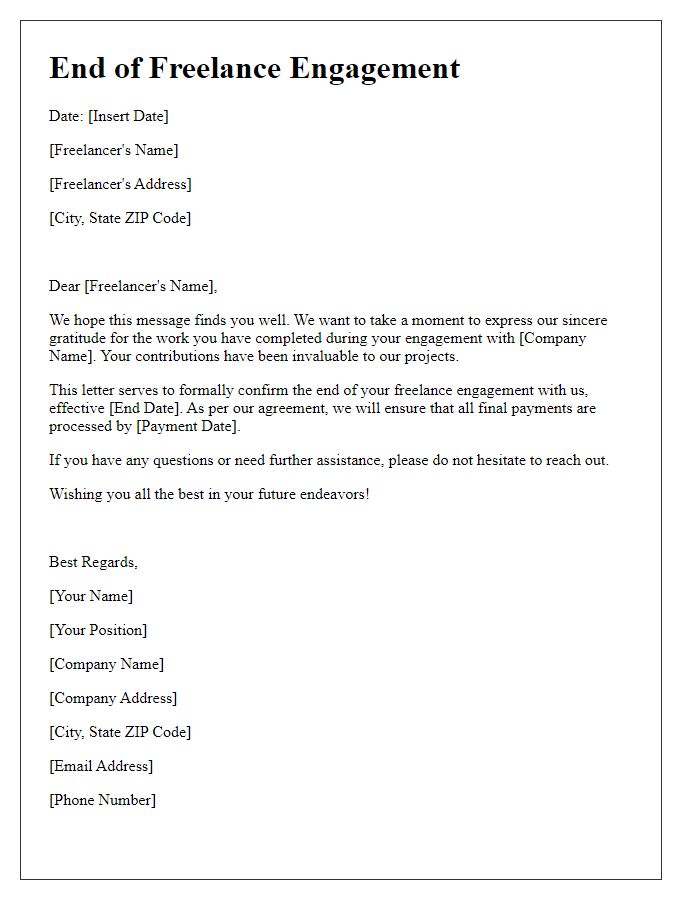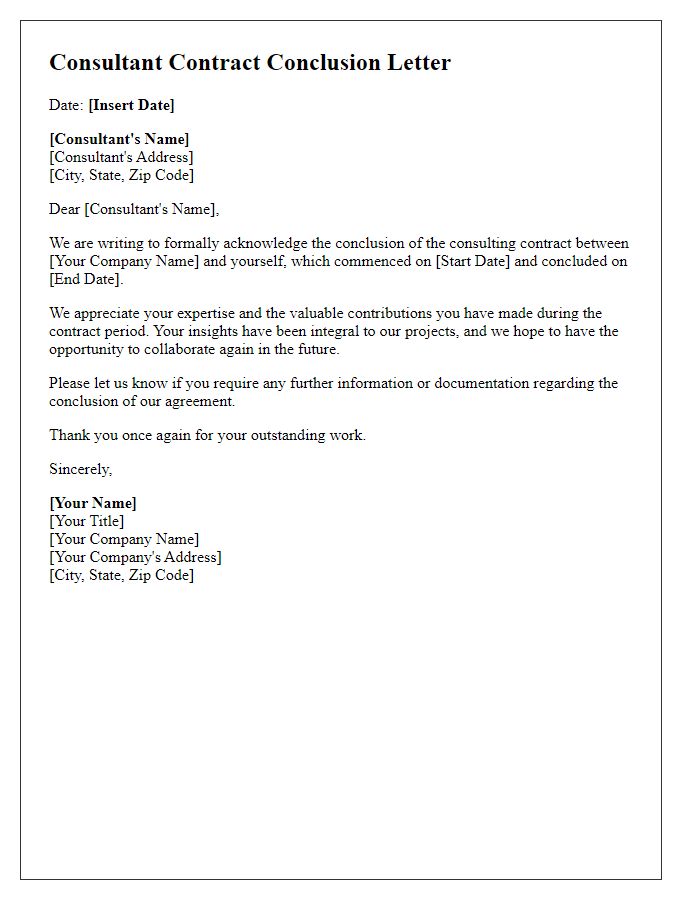If you're navigating the often tricky waters of terminating an independent contractor, it's essential to approach the situation with clarity and professionalism. A well-crafted dismissal letter not only communicates your decision but also helps maintain a positive relationship moving forward. In this article, we'll explore key elements to include in your letter, ensuring that it reflects both legal considerations and your company's values. Ready to learn how to create an effective termination letter? Let's dive in!

Respectful and professional tone
Independent contractors play a crucial role in various sectors, often engaged for their specialized skills and flexibility. However, circumstances can arise necessitating contract termination, such as performance issues or shifts in project direction. A professional dismissal letter should include essential details like the contractor's full name, project name, and end date, conveying the decision respectfully. Clear communication regarding the reasons for termination, and any finalized payments or outstanding work, ensures professionalism. Following standard labor laws, which vary by region, protects both parties. It is vital to provide the contractor with a sense of closure and to uphold a positive professional relationship.
Clear reason for termination
Termination of an independent contractor agreement requires a clear understanding of the reasons behind the decision. Instances such as repeated failure to meet project deadlines, lack of communication, quality issues with deliverables, or violation of contract terms can be legitimate grounds for dismissal. This process should be documented, specifying the date of termination and outlining any outstanding obligations, like final payments for completed work. Including details of prior discussions about performance issues can provide context. Clear, professional language maintains a respectful tone while ensuring transparency in the termination process. Providing a contact for any further queries regarding the decision can assist in maintaining a constructive relationship moving forward.
Contract reference and compliance
Independent contractors, when dismissed, must be informed clearly about the termination terms defined in the contractual agreement. A dismissal notice should reference specific contract clauses (for example, Section 5 regarding termination) that outline compliance requirements. Dates must be precise, including the contract start and end dates, ensuring that the delivered notice complies with stipulated notice periods (typically 14 days). In addition, the notice should detail the reasons for dismissal, such as failure to meet project deadlines or consistently low-quality work, thereby providing clarity on performance expectations. The location, usually the contractor's primary working site (e.g., an office or remote location), also plays a critical role in finalizing any pending payments or material returns related to the contracted work.
Effective date of termination
Independent contractors face challenges during termination processes, especially needing clarity regarding effective dates. Proper communication is crucial; a termination letter should state the precise end date, often aligning with contractual terms. Many contracts specify notification periods, typically ranging from seven to thirty days. Including information such as the reason for termination and final payment details enhances transparency. Legal considerations, including obligations outlined in the contract and adherence to local labor laws, must also be addressed to avoid potential disputes. Clarity regarding the return of company property or final deliverables is essential for an organized transition and maintaining professional relationships post-termination.
Final payment and settlements details
Final payments and settlements for independent contractors, such as freelance web developers or graphic designers, require careful attention to detail to ensure all parties are clear on outstanding amounts. Contractors must receive a breakdown of their final compensation, including hours worked at the agreed rate, any outstanding invoices from previous projects, and reimbursement for incurred expenses, such as travel or materials, that were pre-approved. A date for the final payment, typically within 30 days of contract termination, should be clearly stated, along with a reminder to return any company property, like laptops or access cards, to prevent delays in processing the final settlement. Providing contact information for any questions can facilitate a smooth transition and maintain professional relationships.













Comments